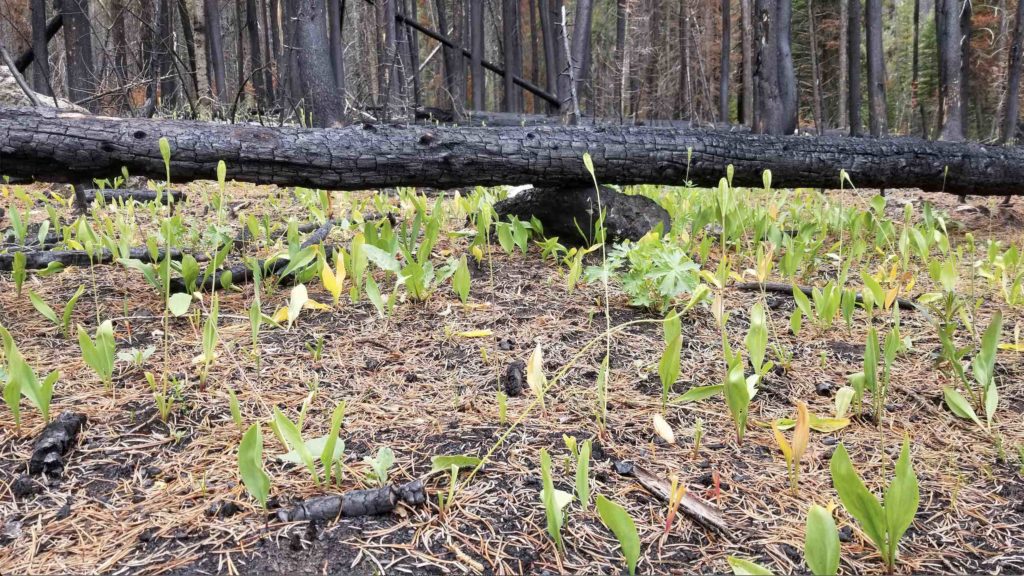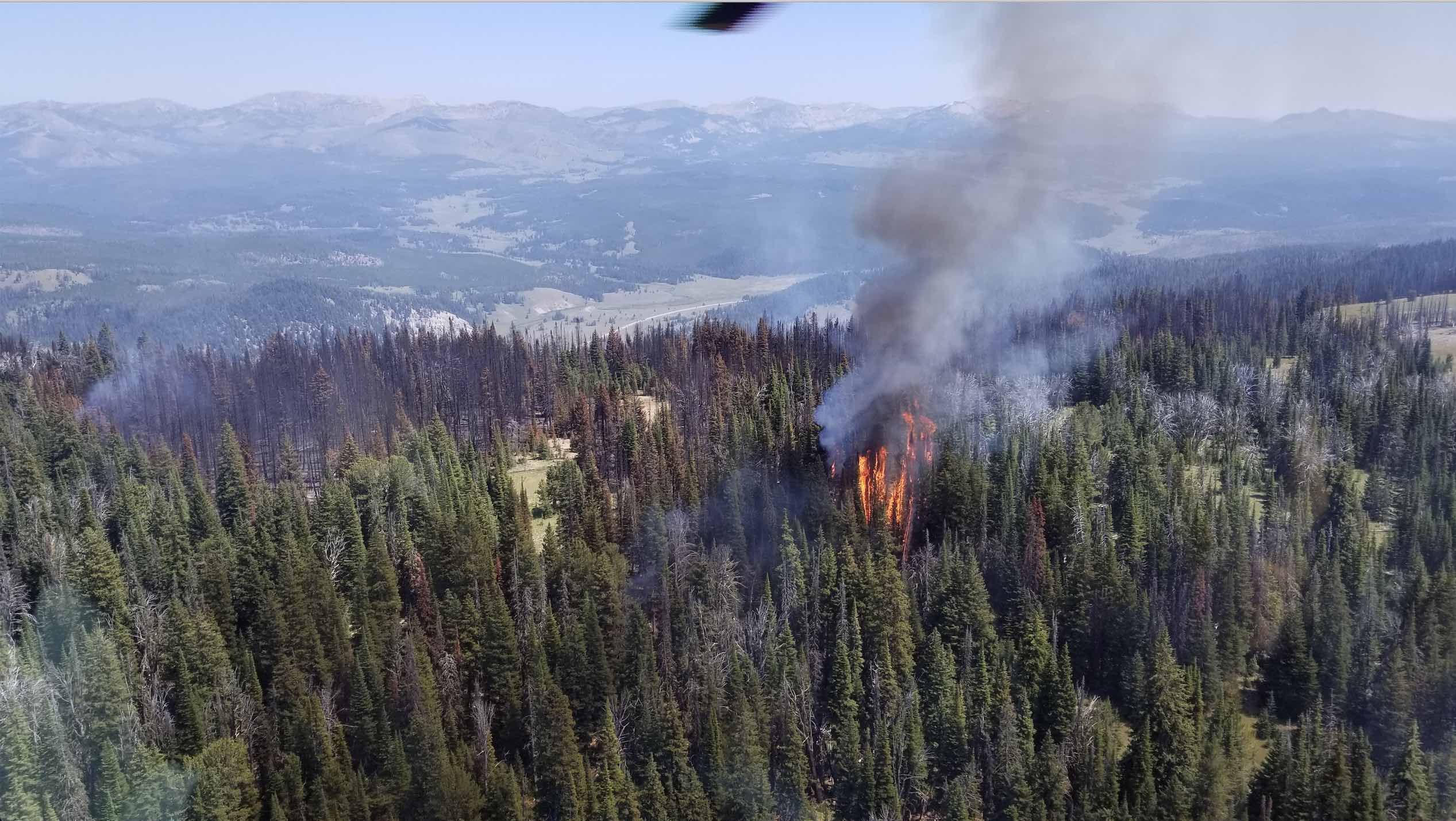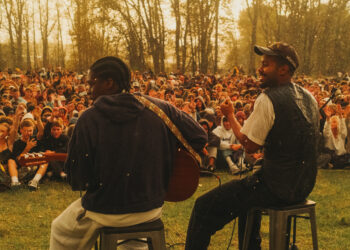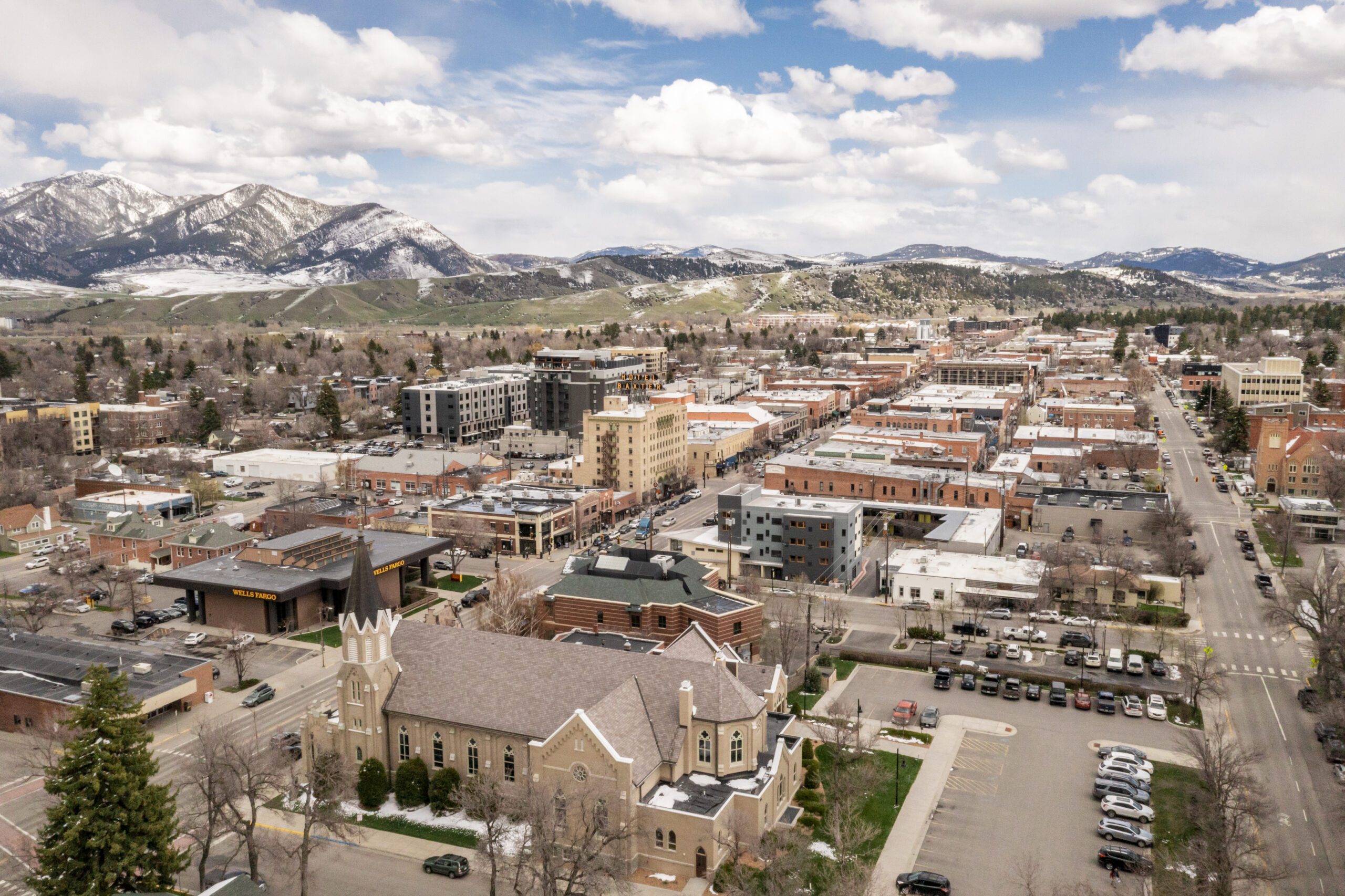Unsuppressed Bacon Rind Fire part of ‘nature’s schedule’
By Jessianne Castle ENVIRONMENTAL AND OUTDOORS EDITOR
BIG SKY – Last summer, the Patten family could hear the not-so-distant crackling of a wildfire from their cabin near their property boundary approximately 25 miles southeast of Big Sky.
Duncan Patten, 84, who shares ownership of the Black Butte Ranch with his brother and sister, described it as disconcerting, hearing the fire popping in the evenings and wondering if flames from the lightning-ignited Bacon Rind Fire were coming down the hill toward the cabin.
“You do what you can and if nature really wants to override you it can,” Patten said during a June 9 media tour of the fire hosted by the Custer Gallatin National Forest.
Neighboring the Lee Metcalf Wilderness and Yellowstone National Park, the 485-acre ranch is nestled across the Gallatin River and Highway 191 from Black Butte, with Monument Mountain the crowning glory to the southwest. Duncan’s father purchased the land in 1955 from the Story family, which homesteaded the property and is known for patriarch Nelson Story’s role in the founding of Bozeman.
The Bacon Rind Fire seethed throughout most of the summer and continued into fall when wet snowfall finally extinguished the flames after burning approximately 5,500 acres. And while Black Butte Ranch was never evacuated during the blaze, a 40-person fire crew came early in the burn to create a fire break and sprinkler system around the property.

Throughout the fire, staff from CGNF, Yellowstone National Park, Gallatin County Emergency Management and Montana Department of Transportation worked cooperatively to monitor the fire. They were prepared to engage in fire suppression tactics if flames had gotten close enough to areas like Black Butte Ranch but never felt the need to do so.

The fire burned through an area that fire ecologists estimate hadn’t burned for roughly 180 years, in part due to the suppression standard that ruled fire management in the latter half of the 1900s. “There was quite a bit of a fire deficient,” said CGNF fire ecologist Todd Erdody, adding that fire promotes a diverse forest, mineral soil and some plant germination.
“It ended up being a great opportunity to manage the fire with a lot of ecological benefit in there and basically help us out for the next 20 to 30 years because we now have a 5,000 acre fire on this piece of land that we can use as a buffer for future fires down the road,” said Jeff Shanafelt, CGNF west zone fire management officer.

With warm weather forecasted in the coming weeks after extensive moisture in May and June, Park Fire Management Officer John Cataldo said fire danger is moderate in Yellowstone but warned that conditions can change rapidly. “It’s typically this time of year when we can see a rapid increase in the fire danger level,” he said. “We’re on nature’s schedule.”














